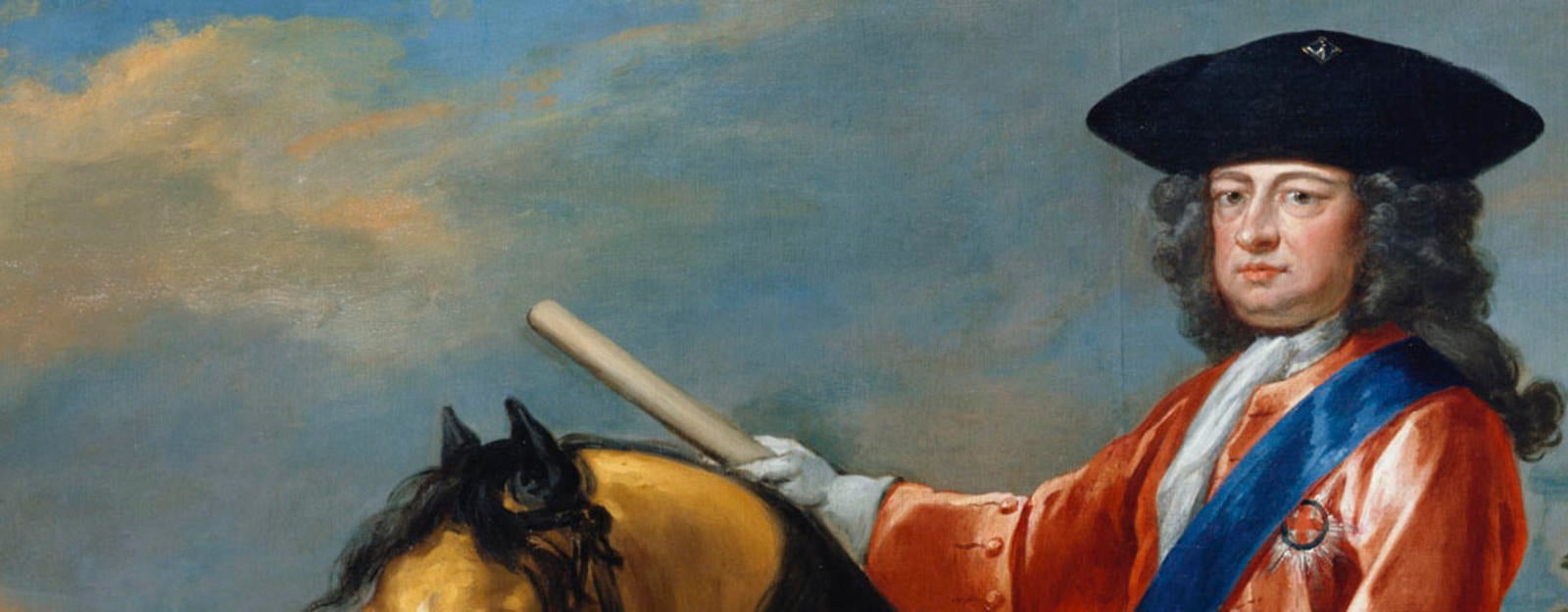George I, King of Great Britain (1660-1727)

- Born 1660, Hanover (city) [Germany]
- Died 1727, Schloss Osnabrück
George I was the first monarch of the Hanoverian dynasty, grandson of the ‘Winter Queen’ — Princess Elizabeth, daughter of King James VI and I. He inherited the British throne on the death of his second cousin Queen Anne. In 1682 he had married his cousin, Princess Sophia Dorothea of Brunswick-Lüneburg (but divorced 1694); their son succeeded as George II.
As Elector of Hanover (in addition to King of Great Britain) George I continued to spend long periods in Germany, but he did also make his mark on the royal palaces in Britain. Most notably, he commissioned William Kent to decorate, remodel and refurnish the State Apartments of Kensington Palace in a classically-inspired scheme. William Kent had been in Italy for a decade from 1709, and his work was greatly inspired by the things he had seen and sketched there. The rooms at Kensington had niches with antique statues and John Michael Rysbrack was commissioned to sculpt a Roman marriage in relief, which was placed above the marble fireplace.
Godfrey Kneller had continued as Principal Painter under George I, and found favour at George's court. He painted several works including a profile of George which was used on the new coins and a portrait of George's faithful servant Mehemet in 1715. George may have been pleased with the connection to his fellow German, Kneller, but he also celebrated the British painter James Thornhill. Thornhill worked at Hampton Court, and in Greenwich, as well as designing panels for the Royal State Coach. He was knighted for his services - the first British-born painter to have received this honour. During his reign George I also acquired some Old Master works to hang at Kensington, including two paintings by Rubens - the tender Holy Family with Saint Francis and a splendid equestrian portrait of Don Rodrigo Calderon.
George I is perhaps best remembered for his patronage not in art but in music. Having worked with Handel in Germany, he commissioned him to write the Water Music for a royal outing on the Thames in 1717.
Reigned: 1714–27